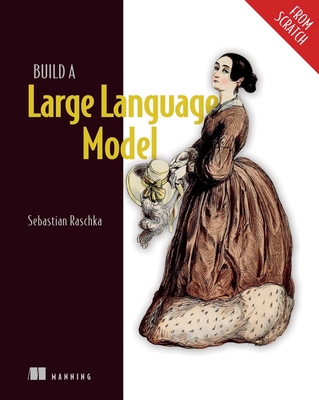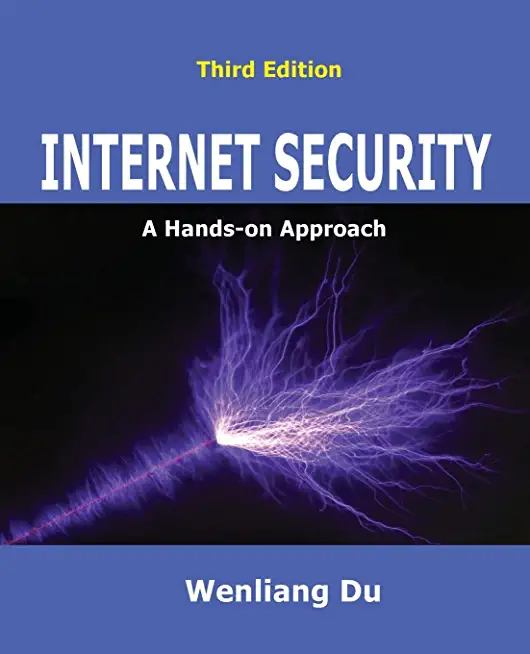10979: Introduction To Microsoft Azure For It Professionals Training in Augusta
Enroll in or hire us to teach our 10979: Introduction To Microsoft Azure For It Professionals class in Augusta, Georgia by calling us @303.377.6176. Like all HSG
classes, 10979: Introduction To Microsoft Azure For It Professionals may be offered either onsite or via instructor led virtual training. Consider looking at our public training schedule to see if it
is scheduled: Public Training Classes
Provided there are enough attendees, 10979: Introduction To Microsoft Azure For It Professionals may be taught at one of our local training facilities.
|
We offer private customized training for groups of 3 or more attendees.
|
||
Course Description |
||
| This course introduces students to the principles of cloud computing. Students will become familiar with how these principles have been implemented in Microsoft Azure. In addition, this course explains how to implement the core Azure infrastructure, consisting of virtual networks and storage. With this foundation, students will be able to create the most common Azure services, including Azure Virtual Machines, Web Apps, and Azure SQL Database. The students will also learn about container-based Azure services and the most prominent examples of serverless computing. The course concludes by describing features of Azure Active Directory (Azure AD).
Course Length: 2 Days
Course Tuition: $890 (US) |
||
Prerequisites |
|
| Before attending this course, students must have: A basic understanding of websites. A basic understanding of Active Directory concepts including: Domains, Users, Domain Controllers. A basic understanding of database concepts including tables and simple queries. | |
Course Outline |
|
Module 1: Introduction to Machine Learning
This module introduces machine learning and discussed how algorithms and languages are used.Lessons
What is machine learning?
Introduction to machine learning algorithms
Introduction to machine learning languages
Lab : Introduction to machine Learning
Sign up for Azure machine learning studio account
View a simple experiment from gallery
Evaluate an experiment
After completing this module, students will be able to:
Describe machine learning
Describe machine learning algorithms
Describe machine learning languages
Module 2: Introduction to Azure Machine Learning
Describe the purpose of Azure Machine Learning, and list the main features of Azure Machine Learning Studio.Lessons
Azure machine learning overview
Introduction to Azure machine learning studio
Developing and hosting Azure machine learning applications
Lab : Introduction to Azure machine learning
Explore the Azure machine learning studio workspace
Clone and run a simple experiment
Clone an experiment, make some simple changes, and run the experiment
After completing this module, students will be able to:
Describe Azure machine learning.
Use the Azure machine learning studio.
Describe the Azure machine learning platforms and environments.
Module 3: Managing DatasetsAt the end of this module the student will be able to upload and explore various types of data in Azure machine learning.Lessons
Categorizing your data
Importing data to Azure machine learning
Exploring and transforming data in Azure machine learning
Lab : Managing Datasets
Prepare Azure SQL database
Import data
Visualize data
Summarize data
After completing this module, students will be able to:
Understand the types of data they have.
Upload data from a number of different sources.
Explore the data that has been uploaded.
Module 4: Preparing Data for use with Azure Machine LearningThis module provides techniques to prepare datasets for use with Azure machine learning.Lessons
Data pre-processing
Handling incomplete datasets
Lab : Preparing data for use with Azure machine learning
Explore some data using Power BI
Clean the data
After completing this module, students will be able to:
Pre-process data to clean and normalize it.
Handle incomplete datasets.
Module 5: Using Feature Engineering and SelectionThis module describes how to explore and use feature engineering and selection techniques on datasets that are to be used with Azure machine learning.Lessons
Using feature engineering
Using feature selection
Lab : Using feature engineering and selection
Prepare datasets
Use Join to Merge data
After completing this module, students will be able to:
Use feature engineering to manipulate data.
Use feature selection.
Module 6: Building Azure Machine Learning ModelsThis module describes how to use regression algorithms and neural networks with Azure machine learning.Lessons
Azure machine learning workflows
Scoring and evaluating models
Using regression algorithms
Using neural networks
Lab : Building Azure machine learning models
Using Azure machine learning studio modules for regression
Create and run a neural-network based application
After completing this module, students will be able to:
Describe machine learning workflows.
Explain scoring and evaluating models.
Describe regression algorithms.
Use a neural-network.
Module 7: Using Classification and Clustering with Azure machine learning modelsThis module describes how to use classification and clustering algorithms with Azure machine learning.Lessons
Using classification algorithms
Clustering techniques
Selecting algorithms
Lab : Using classification and clustering with Azure machine learning models
Using Azure machine learning studio modules for classification.
Add k-means section to an experiment
Add PCA for anomaly detection.
Evaluate the models
After completing this module, students will be able to:
Use classification algorithms.
Describe clustering techniques.
Select appropriate algorithms.
Module 8: Using R and Python with Azure Machine LearningThis module describes how to use R and Python with azure machine learning and choose when to use a particular language.Lessons
Using R
Using Python
Incorporating R and Python into Machine Learning experiments
Lab : Using R and Python with Azure machine learning
Exploring data using R
Analyzing data using Python
After completing this module, students will be able to:
Explain the key features and benefits of R.
Explain the key features and benefits of Python.
Use Jupyter notebooks.
Support R and Python.
Module 9: Initializing and Optimizing Machine Learning ModelsThis module describes how to use hyper-parameters and multiple algorithms and models, and be able to score and evaluate models.Lessons
Using hyper-parameters
Using multiple algorithms and models
Scoring and evaluating Models
Lab : Initializing and optimizing machine learning models
Using hyper-parameters
After completing this module, students will be able to:
Use hyper-parameters.
Use multiple algorithms and models to create ensembles.
Score and evaluate ensembles.
Module 10: Using Azure Machine Learning Models
This module explores how to provide end users with Azure machine learning services, and how to share data generated from Azure machine learning models.Lessons
Deploying and publishing models
Consuming Experiments
Lab : Using Azure machine learning models
Deploy machine learning models
Consume a published model
After completing this module, students will be able to:
Deploy and publish models.
Export data to a variety of targets.
Module 11: Using Cognitive Services
This module introduces the cognitive services APIs for text and image processing to create a recommendation application, and describes the use of neural networks with Azure machine learning.Lessons
Cognitive services overview
Processing language
Processing images and video
Recommending products
Lab : Using Cognitive Services
Build a language application
Build a face detection application
Build a recommendation application
After completing this module, students will be able to:
Describe cognitive services.
Process text through an application.
Process images through an application.
Create a recommendation application.
Module 12: Using Machine Learning with HDInsightThis module describes how use HDInsight with Azure machine learning.Lessons
Introduction to HDInsight
HDInsight cluster types
HDInsight and machine learning models
Lab : Machine Learning with HDInsight
Provision an HDInsight cluster
Use the HDInsight cluster with MapReduce and Spark
After completing this module, students will be able to:
Describe the features and benefits of HDInsight.
Describe the different HDInsight cluster types.
Use HDInsight with machine learning models.
Module 13: Using R Services with Machine LearningThis module describes how to use R and R server with Azure machine learning, and explain how to deploy and configure SQL Server and support R services.Lessons
R and R server overview
Using R server with machine learning
Using R with SQL Server
Lab : Using R services with machine learning
Deploy DSVM
Prepare a sample SQL Server database and configure SQL Server and R
Use a remote R session
Execute R scripts inside T-SQL statements
After completing this module, students will be able to:
Implement interactive queries.
Perform exploratory data analysis.
|
Course Directory [training on all levels]
Technical Training Courses
Software engineer/architect, System Admin ... Welcome!
- .NET Classes
- Agile/Scrum Classes
- AI Classes
- Ajax Classes
- Android and iPhone Programming Classes
- Blaze Advisor Classes
- C Programming Classes
- C# Programming Classes
- C++ Programming Classes
- Cisco Classes
- Cloud Classes
- CompTIA Classes
- Crystal Reports Classes
- Design Patterns Classes
- DevOps Classes
- Foundations of Web Design & Web Authoring Classes
- Git, Jira, Wicket, Gradle, Tableau Classes
- IBM Classes
- Java Programming Classes
- JBoss Administration Classes
- JUnit, TDD, CPTC, Web Penetration Classes
- Linux Unix Classes
- Machine Learning Classes
- Microsoft Classes
- Microsoft Development Classes
- Microsoft SQL Server Classes
- Microsoft Team Foundation Server Classes
- Microsoft Windows Server Classes
- Oracle, MySQL, Cassandra, Hadoop Database Classes
- Perl Programming Classes
- Python Programming Classes
- Ruby Programming Classes
- Security Classes
- SharePoint Classes
- SOA Classes
- Tcl, Awk, Bash, Shell Classes
- UML Classes
- VMWare Classes
- Web Development Classes
- Web Services Classes
- Weblogic Administration Classes
- XML Classes
Business Training Courses
Project Managers, Business Analysts, Paralegals ... Welcome!
Upcoming Classes
Gain insight and ideas from students with different perspectives and experiences.
- Python for Scientists
8 December, 2025 - 12 December, 2025 - AngularJS
5 October, 2025 - 7 October, 2025 - ASP.NET Core MVC (VS2022)
6 October, 2025 - 7 October, 2025 - Object Oriented Analysis and Design Using UML
20 October, 2025 - 24 October, 2025 - Object-Oriented Programming in C# Rev. 6.1
17 November, 2025 - 21 November, 2025 - See our complete public course listing






